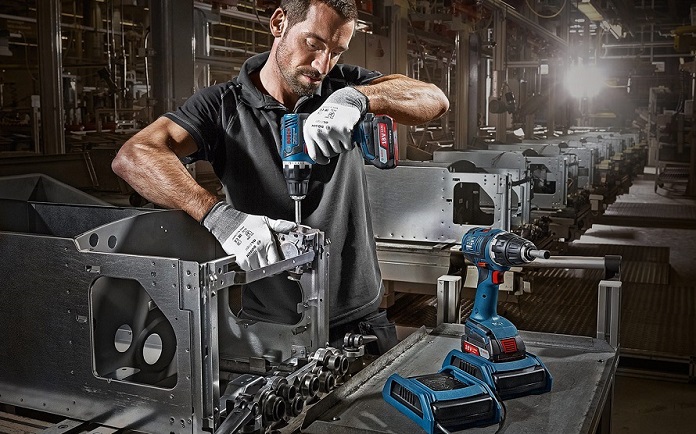From privately owned panel and courier vans to commercially owned utility and goods trucks, there are more than 3.5 million registered light commercial vehicles in Australia. They make up 16 per cent of all the vehicles on Australian roads, and they’re used for everything from personal conveyance to small package deliveries.
The capacity to spare healthy payloads is what makes vans so appealing. You can transport a lot of cargo in a covered 3.5-tonne frame that’s been outfitted the way you want, but if you’re working with trolleys, hand trucks, or other wheeled equipment, you probably need help getting it all loaded and unloaded. This is where you need a ramp.
If you’re a van owner, the chances are pretty good that you’ve entertained the thought of purchasing a ramp at least once. If you already own one, that’s great; but if you’re still on the fence about purchasing one, maybe now’s the time to reconsider just how much of a difference one could make, both professionally and personally.
Flexible Ramp Solutions for Vans
Whether you’re a removalist who specializes in heavy appliances, or you have a family member who relies on a powerchair or mobility scooter, you need a way of walking goods and materials onto and off of your vehicle. Investing in a lightweight van loading ramp is the optimal solution for all your loading and unloading requirements, and it’s one that emphasizes both professional convenience and personal safety.

An easy-to-lift ramp that can be slid quickly into position when needed and permanently stowed away in your van gives you maximum flexibility for any occasion. It does away with the need to recruit extra hands to help with loading and unloading jobs that could ordinarily be handled by one person; and the same ramp can even be used to negotiate curbs, steps, and other features that can be just as challenging as loading your vehicle. Most importantly though, loading ramps for vans help to eliminate the risk of material damage and personal injury that can occur when you’re lifting and transporting heavy objects.
Lightweight Ramps Doing Heavy-Duty Work
Just because a ramp is heavy-duty doesn’t mean that it has to be heavy. In fact, a sturdy 400kg – 1000kg rated aluminium van ramp typically weighs less than 35kg, features a no-skid treaded surface or coating as standard, and can easily be set up by one person. Not only are alloy ramps significantly lighter than steel-structured ones, but they’re also rust and corrosion-resistant, and they’ll retain their polished good looks for a lifetime.
Alloy van ramps are even sturdy enough for loading lawnmowers and motorcycles onto trailers, so they’re not restricted to using one only on your van. From loading and unloading heavy tool trolleys and transit cases, to goods moved on pallet trucks and machine dollies, lightweight ramps for vans aren’t put off by the prospect of doing heavyweight work wherever they’re needed.
Right-Sized Ramps for Safety
Ordinarily, a 15° – 20° incline is considered to be the ideal angle for traversing a ramp by foot. Fortunately, ramps for vans don’t have to reach extreme heights, so their angles and lengths can be kept within that ideal range. Van ramp lengths range from 1.8m – 2.4m, allowing for a gradual gradient change that’s easy to negotiate when walking. And lengthened connection plates ensure these ramps maintain a solid foot on your vehicle without inadvertently shifting position.
With widths ranging between 77cm – 80cm and protected by raised side rails, these ramps are optimally sized to safely accommodate any load that can fit through the side or rear doors of most modern vans. Their dimensions don’t preclude their portability, though. A ramp that you can’t bring with you wherever you go isn’t very effective, and van ramps are all about being portable.
Portable Ramps Make a Difference
Portability is one of the most crucial attributes for buying the right van ramp. Suitcase-style and 4-panel folding ramps for vans ensure that never have to leave home without your ramp, or that you’ll ever arrive at a location where you expect to have a ramp, but don’t.

Folding ramps combine all the best traits of strength and usability into a single package that can slide conveniently behind a seat, or against a wall or bulkhead. This is especially important if you, or someone you’re transporting relies on motorized mobility assistance. Trying to wrestle a heavy, battery-equipped wheelchair or similar device out of a van without using a ramp runs the risk of needlessly damaging an extremely technical piece of equipment. It’s not a risk worth taking, which makes looking at portable van ramps for sale the logical choice.
Ramps and Personal Safety
If you’re a tradie, contractor, or hotshot driver who uses their van in a professional capacity, here’s your reality: a ramp is going to help relieve the postural and repetitive strain injuries associated with lifting and twisting heavy items from the waist. These are potentially debilitating injuries that can occur from loading vehicles like vans by hand, and they’re all but completely avoidable simply by employing the proper loading equipment.
Using a ramp to transfer your goods and cargo to the desired loading elevation inside a van or truck minimizes the likelihood of musculoskeletal problems. It’s a solid commitment to your immediate safety, in addition to your long-term good health.
The Final Word
Make no mistake: although owning a ramp may seem like a needless expense, nothing could be further from the truth. You simply can’t expect one to be available at every destination, and the one that might be available may be totally inappropriate for what you need to load or unload.
Purchasing your own lightweight van loading ramp is an option you can’t afford to overlook. You can arrive confidently at any destination knowing that you brought the right-sized ramp with you, and it’s an investment that’ll pay for itself many times over.















